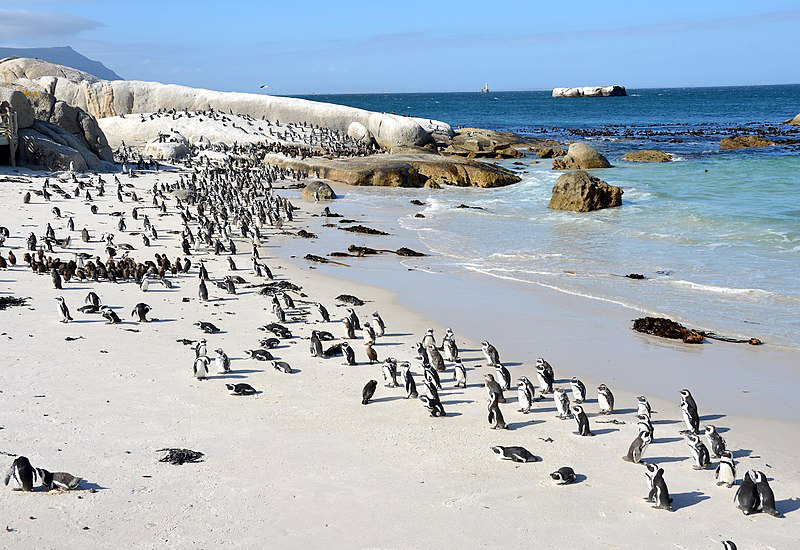In this article you will find many interesting facts about South Africa. We even included a quiz to test your knowledge about the country. You can go to the quiz by clicking here.
- Languages: If you find it hard enough to be in a country where, for example, three languages are spoken, then South Africa is probably not the country for you. There are 11 official languages. And that’s not even counting the dialects.
- Ethnicity: A whopping 80 % of the country’s population are black people, while whites only make up 8%. This makes it even more incredible that the white oppression of the black people in the country, known as Apartheid, could take place.
- Riches: South Africa also has the distinction of having an underground treasure trove of riches. Not only can some of the world’s largest diamonds be found here, and there are also large collections of precious metals, but over 40% of the world’s gold is mined here.
- Penguins: Many people associate South Africa with sun and warmth, but if you travel to Boulders beach, you’ll encounter something you probably wouldn’t expect to see in Africa: Penguins. They reportedly arrived in 1982 and have been living there ever since.
- Shipwreck: Throughout history, it has not been easy to cross the southern tip of Africa by ship. As a result, many ships have run aground here or succumbed to storms. In fact, over 3,000 shipwrecks can be found on the South African coast, many of which date back over 500 years.
- Nuclear: Not only was South Africa the first country in Africa – and the fifth worldwide – to make same-sex marriage legal, South Africa was also the first country to voluntarily shelve its nuclear program.
- Illness: Although South Africa is very modern and progressive, the country also has an unfortunate record. It is home to one of the most prevalent cases of HIV in the world. In fact, so many people in the country carry HIV that it’s equivalent to one in five of the country’s population having HIV.
- Surgery: South Africa may not have been the place where this was expected to happen, but it was nevertheless the site of the world’s first successful heart transplant. It happened in 1967.
- Nobel Prize: In South Africa, both former and now deceased President Nelson Mandela and human rights activist Desmond Tutu have received the Nobel Peace Prize. It’s not that unusual for a country to have had multiple Nobel Prize winners, but what’s crazy is that they both lived on the same street.
- Flowers: Table Mountain in South Africa is an impressive sight in itself, but the mountain is also home to many types of flowers. In fact, there are so many different kinds on the mountain that it’s more than what you can find in England, Ireland, Wales and Scotland – combined.
Quiz about South Africa
FAQ about the 3 capitals of South Africa
How many capitals do South Africa have?
3 capitals: Pretoria is the administrative capital. Cape Town is the seat of Parliament and thus the legislative capital. Bloemfontein has traditionally been regarded as the judicial capital. The largest city, and site of highest court is Johannesburg.
Did South Africa always have 3 capitals?
No, prior to the formation of the Union of South Africa, Bloemfontein and Pretoria were the capital cities. When the Union of South Africa was established in 1910, there was a heated debate over where to locate the nation’s capital. The present capital cities are the result of a deal to distribute a power balance across the nation.
What is the famous capital of South Africa?
Cape Town is the most famous capital of South Africa.
What is the oldest capital of South Africa?
The “Mother City,” Cape Town, is the oldest city in South Africa and has a more than 300-year-old cultural legacy.
Which capital city is the richest in South Africa?
Johannesburg, the commercial hub of South Africa, continues to be the richest city in the continent. According to the World’s Wealthiest Cities Report, it is also known as the “City of Gold,” and it is where the majority of the continent’s dollar billionaires reside.





